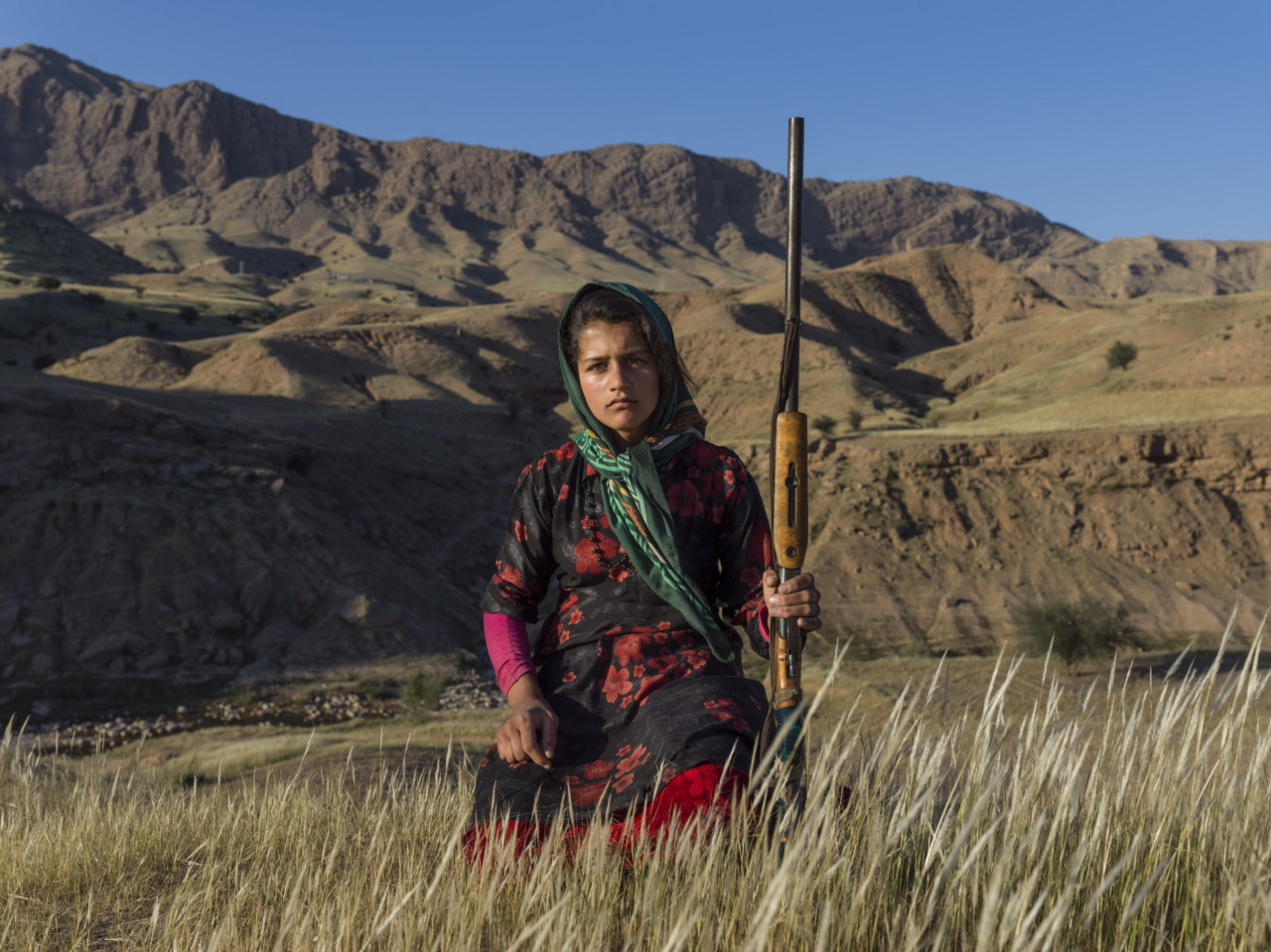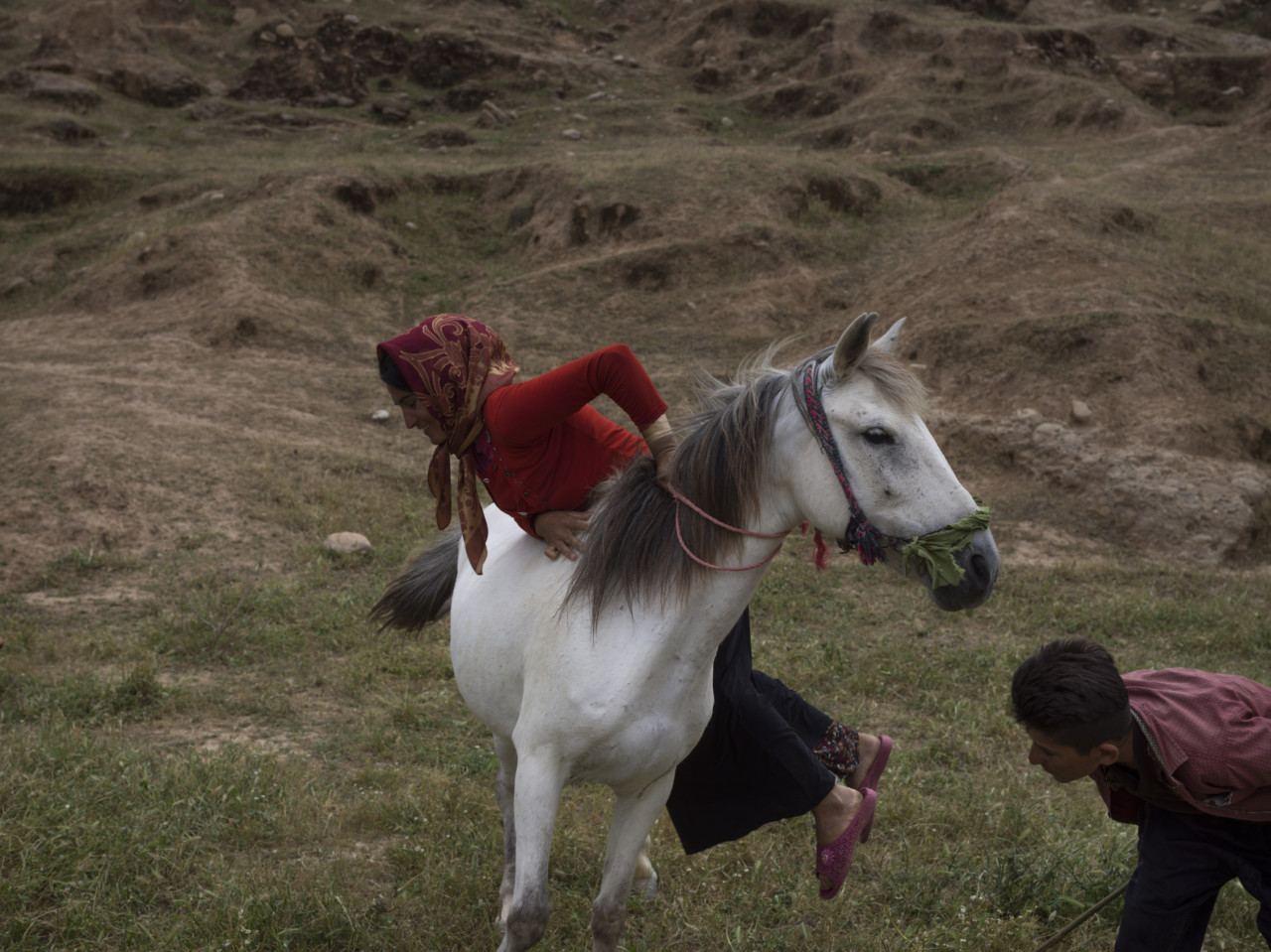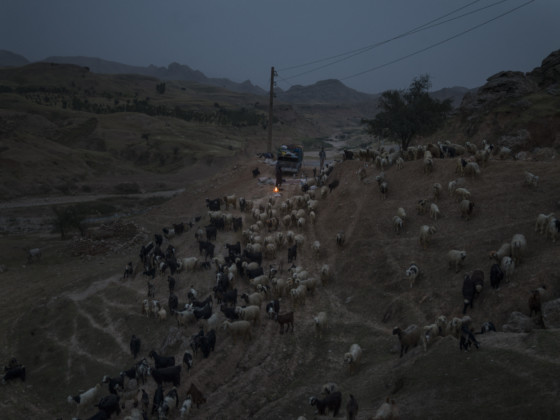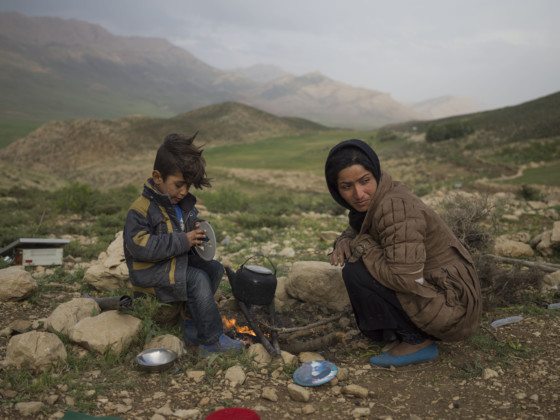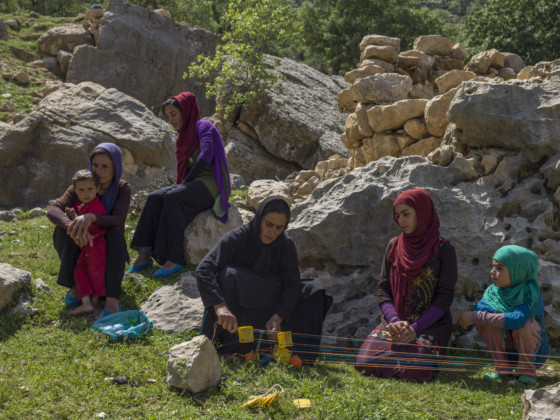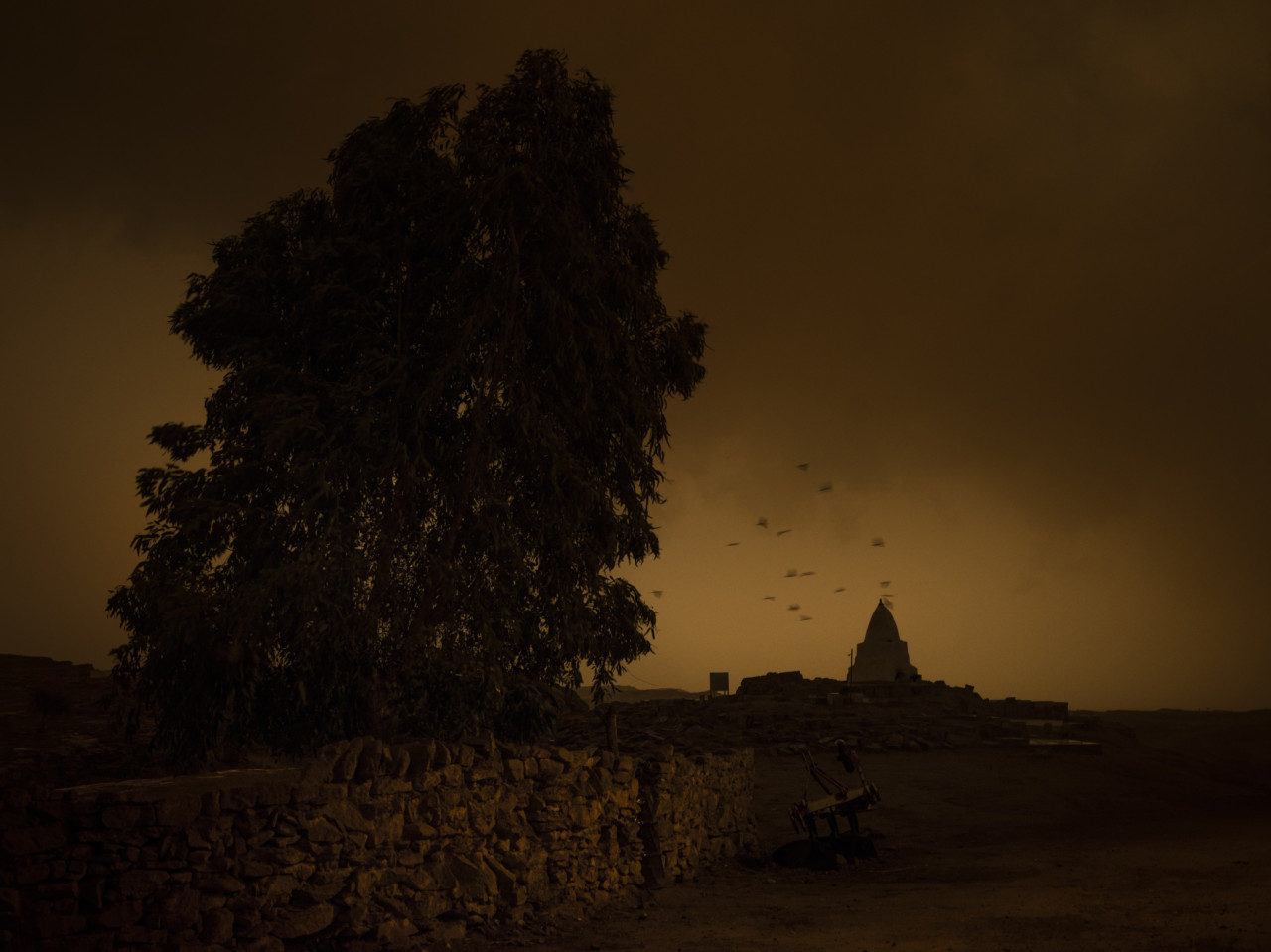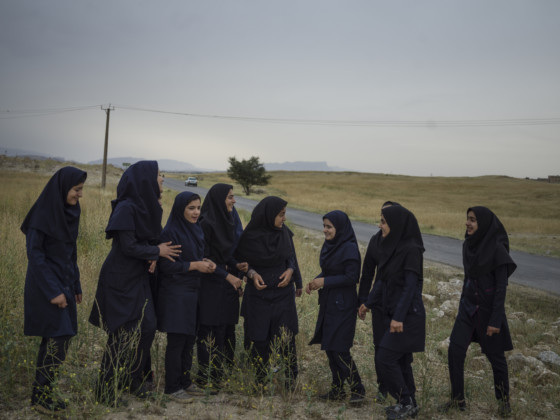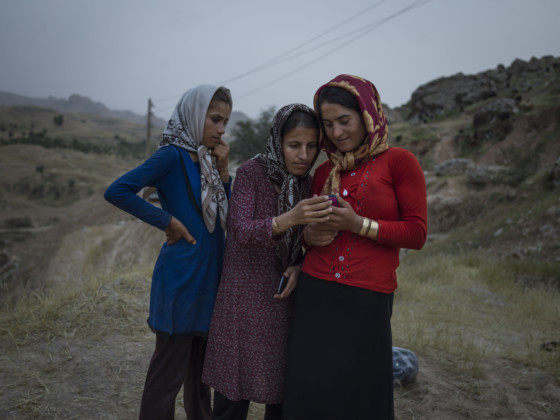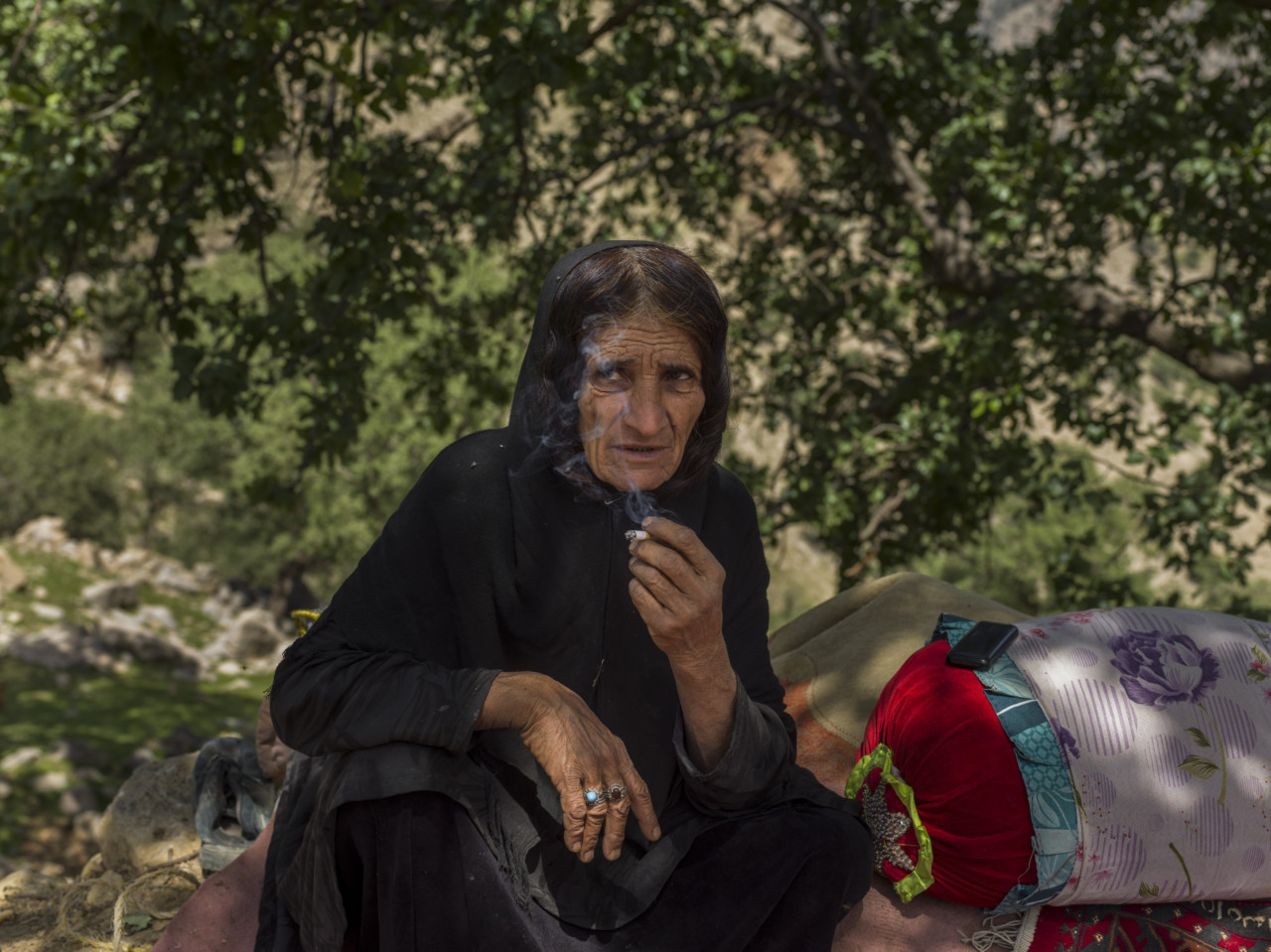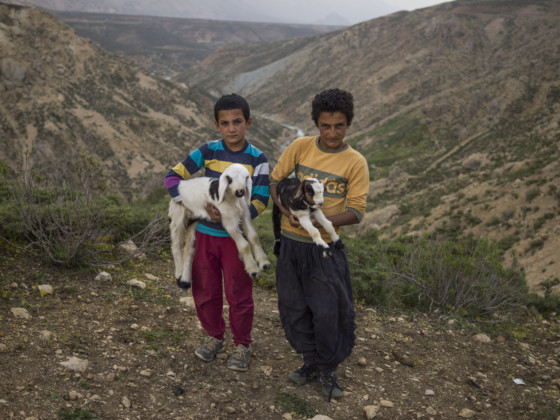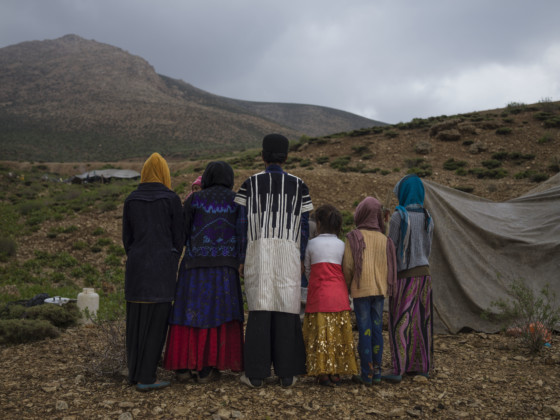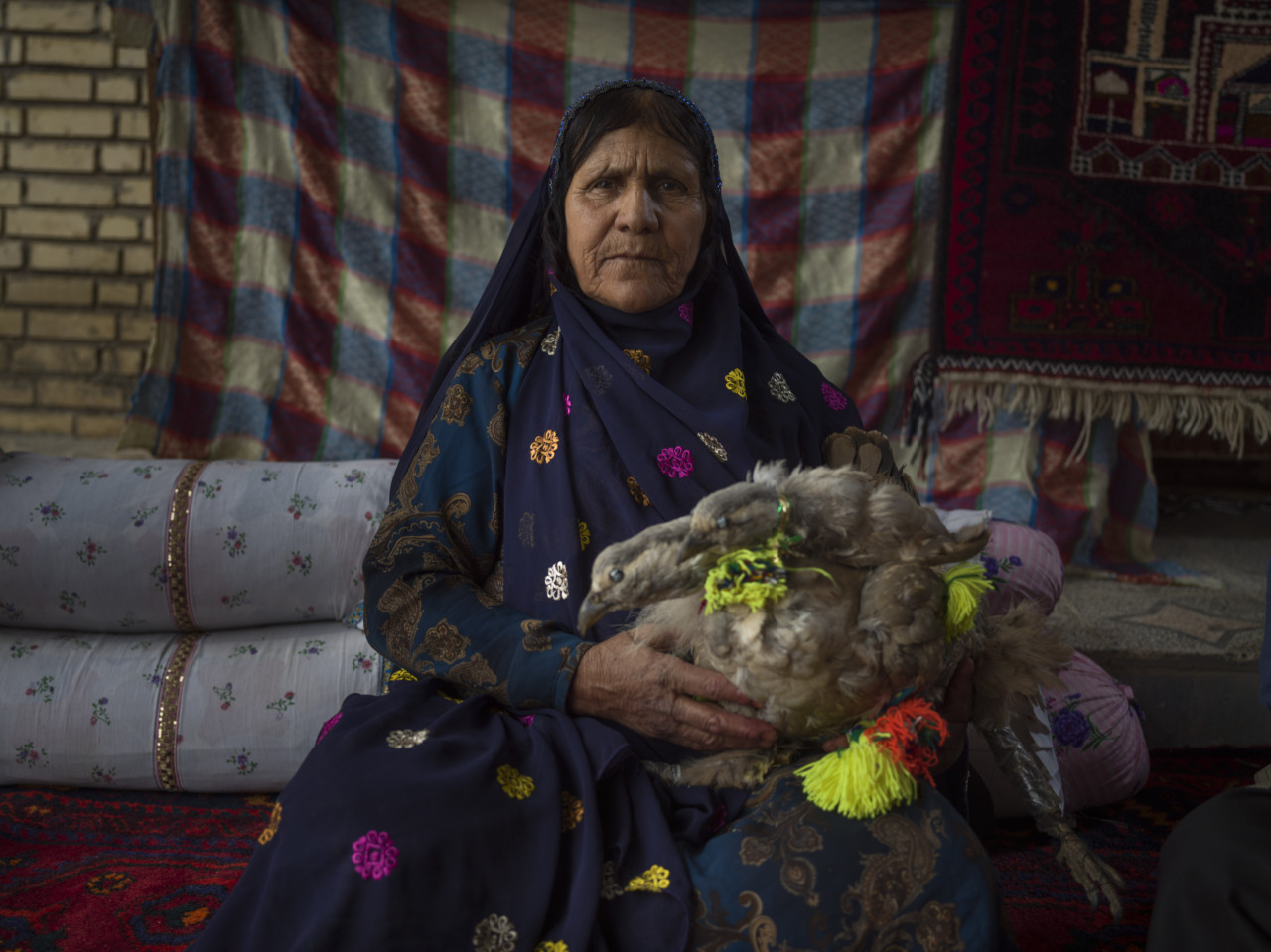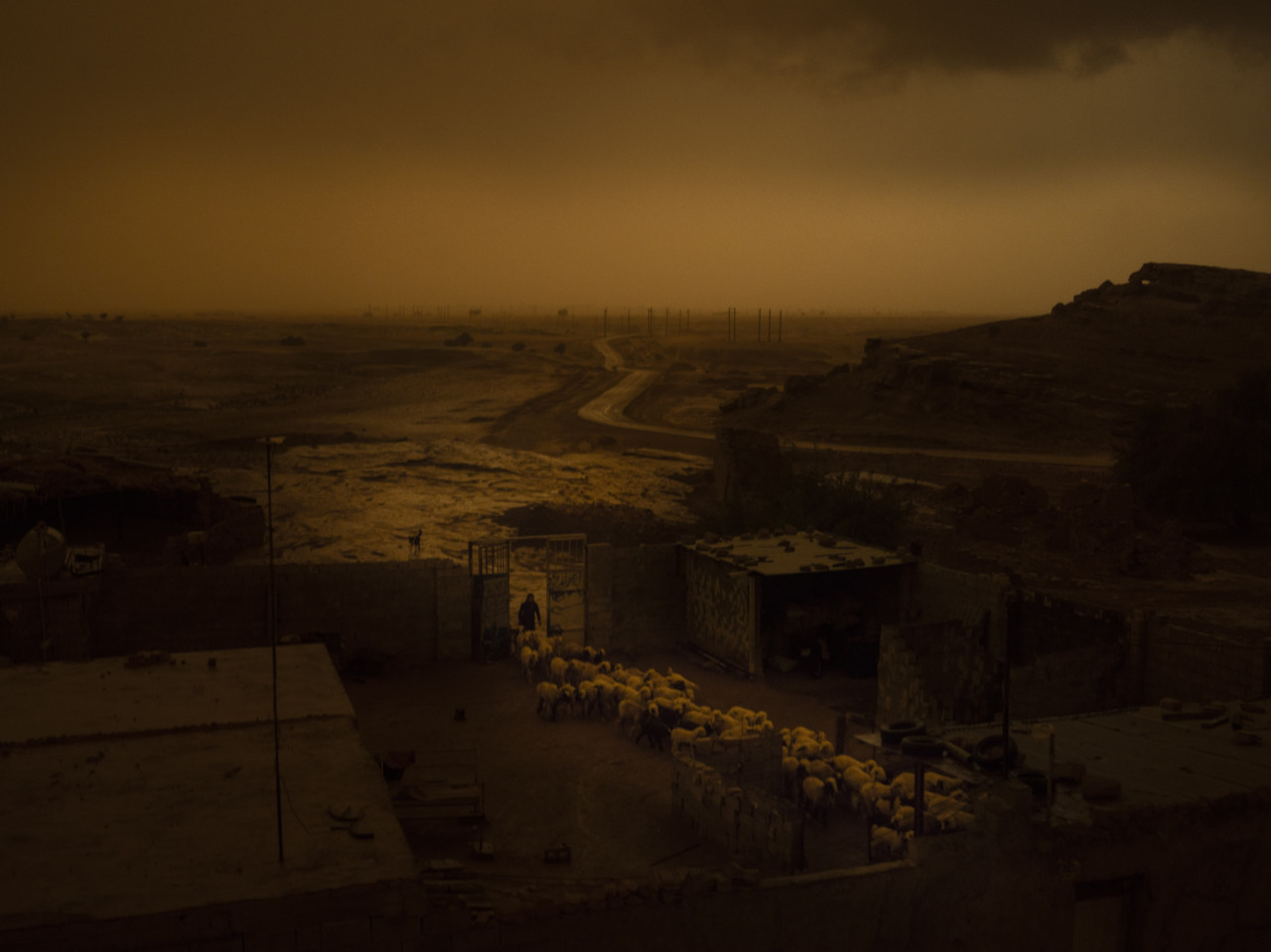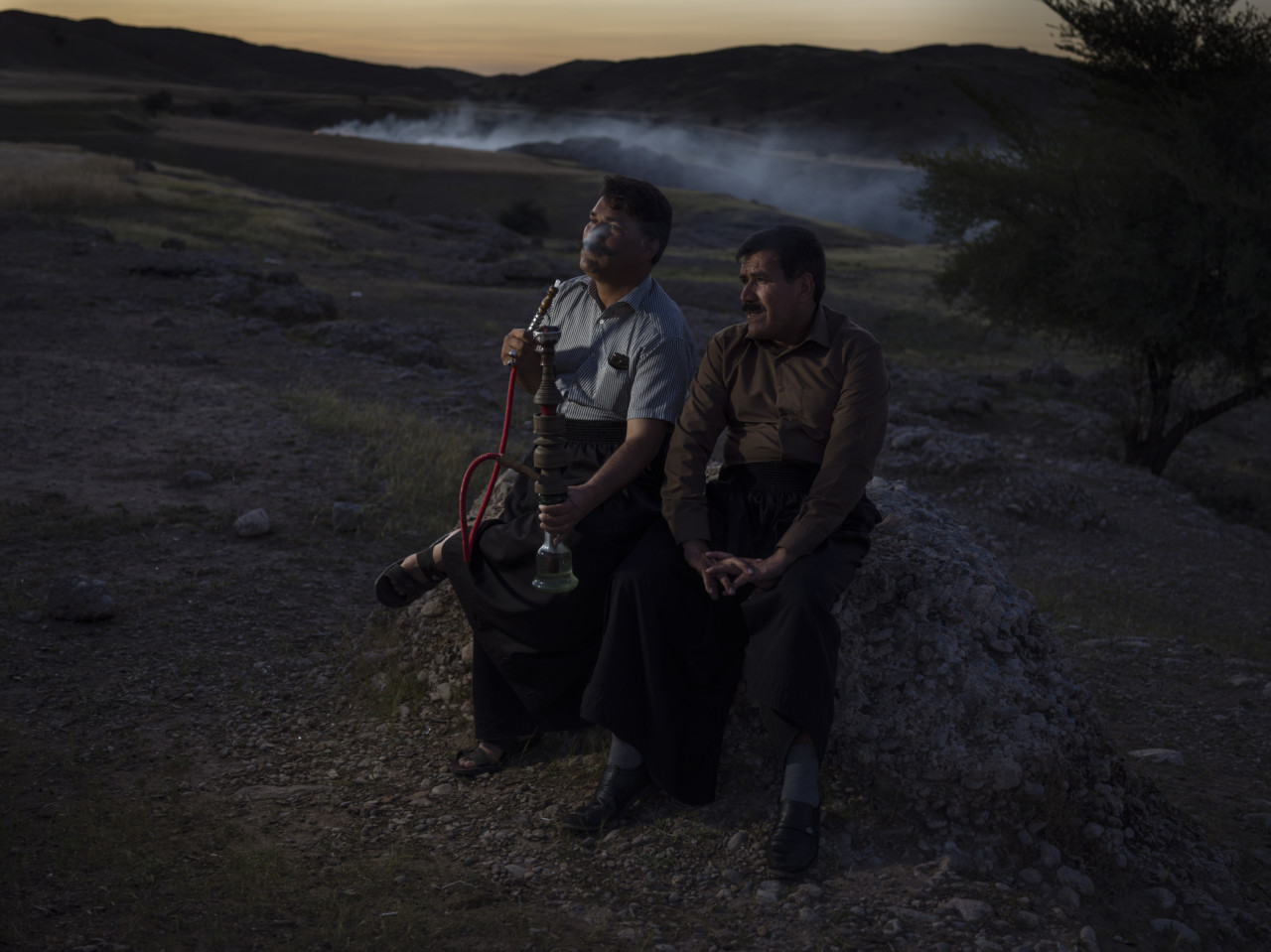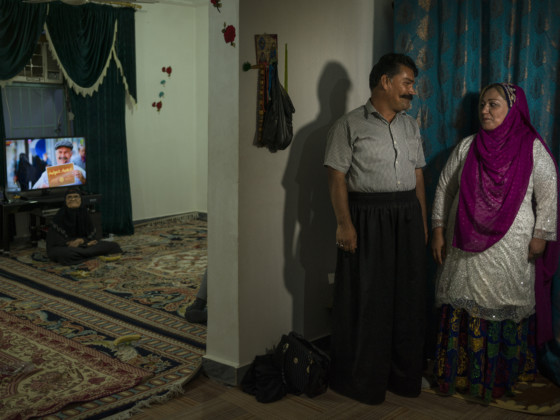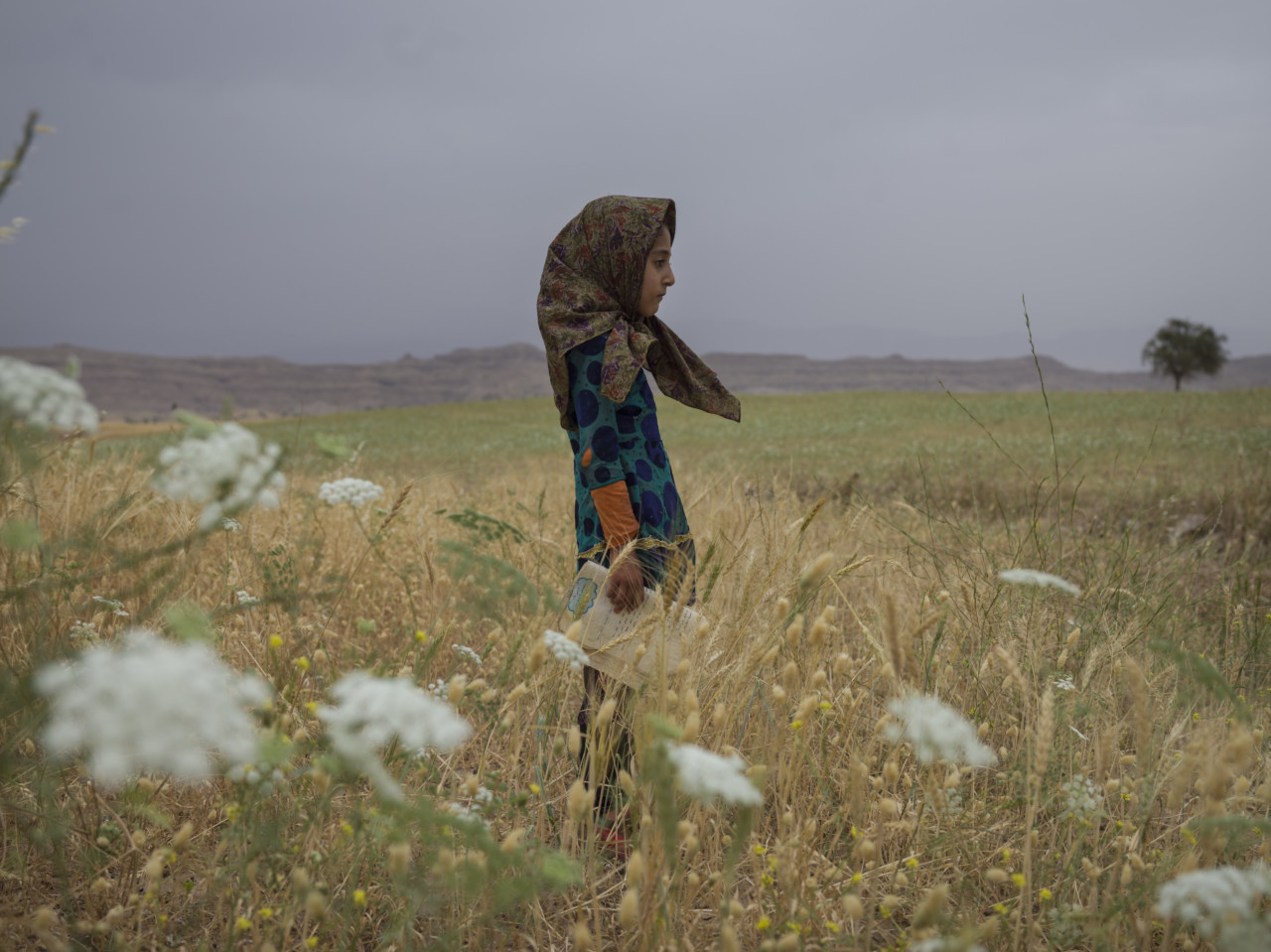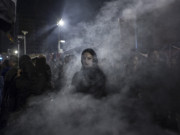Why Iran’s Nomads are Fading Away
As a generation of the Bakhtiari people is lured toward employment in the country's cities, Newsha Tavakolian photographs those left behind to face drought and dust storms
In 2018 Magnum photographer Newsha Tavakolian traveled to her native Iran, alongside writer Thomas Erdbrink, to document the environmental and societal challenges facing the country’s nomadic Bakhtiari people. Erdbrink’s text was originally published in the October 2018 issue of National Geographic Magazine.
The peaks of the Zagros mountain range are still dusted with snow. Long, twisting roads draw lines over the valleys and slopes here in western Iran. They are ancient paths, trodden by feet and hooves for thousands of years in the ever repeating movement of migration.
These days cars and rented trucks, rather than horses, bring the remaining Iranian nomads and their flocks to their summer pastures high up in the Iranian highlands near the city of Chelgard. Instead of making daylong hikes for news to the long-abandoned nomadic communication center, local Bakhtiari tribe members carry cell phones and complain about bad reception.
Iran’s nomads have been making the same migration for millennia. In spring they headed for the cooler pastures of the Zagros, where grass for their flocks of sheep and goats was abundant. At the end of autumn they would return to Iran’s oil-rich Khuzestan Province, their animals strong and well fed to make it through the winter.
Iran’s more than one million nomads have long resisted modernity through the isolation that comes with their lifestyle. Deep traditions and patriarchy also have kept change out. But the combination of persistent drought, dust storms that turn the skies orange, widespread urbanization, mobile internet, and the spread of higher education has made their numbers dwindle. The elderly couples still setting up their tents on the flanks of the Zagros admit that they might be the final chapter in the history of one of the largest remaining nomadic communities on Earth.
In the distance a thunderstorm was brewing as one couple huddled in their tent. Dark clouds drifted over the valley, pouring out gray stripes of rain. Bibi Naz Ghanbari, 73, and her husband, Nejat, had set up their black tent in the same place where their family had migrated for 200 years. There used to be dozens of family members around. Now there was just one other tent, home to a distant cousin. The couple said unexpected spring cold and rains had gotten into their bones, after they managed to save their tent twice during storms. They had migrated early, to make sure their flock would be able to graze on the spring grass, after a winter with barely any precipitation. None of their eight children had joined them. The battery in Bibi Naz Ghanbari’s phone was out of power, so she couldn’t even reach them.
"As the number of nomads has fallen, the strongest advocates of settling down have been the nomadic women. Their lives are tough, and they know it"
-
“They all live in cities now. What was the point of having them?” she said of her children, who had sold off their flocks to live in houses. “What kind of life is this?” she asked, pointing at the holes in the tent. “We had to sleep under three blankets last night, and it was still cold. I wish I lived in a house too.”
As the number of nomads has fallen, the strongest advocates of settling down have been the nomadic women. Their lives are tough, and they know it. Zahra Amiri, 61 and the mother of nine, wakes up at dawn and brings water from a well, a long walk. After that she bakes bread and prepares breakfast. Often she joins her husband while shepherding, milks the sheep, makes yogurt and cheese. Her hands and face are darkened by the sun. If there is any time between chores, she works on a kilim, or carpet. To reach their summer destination, her 24-year-old daughter, Forouzan, rode a horse, guiding her two sisters and eight mules carrying their belongings and a tent.
"Inheritance laws for nomads are officially no different from those for other Iranians, but in practice women rarely inherit anything"
-
“After all these years of hard working, I have nothing to show for it, except these children and the sun,” Amiri said. “Our only joy is to drink tea.” Inheritance laws for nomads are officially no different from those for other Iranians, but in practice women rarely inherit anything. The nomadic custom is that women give away their inheritance rights to their brothers. On the other hand, women are allowed to ride horses and carry guns, and Amiri had both. Many Iranian nomadic men say that milking, getting water, and giving inheritances to women are eib, or improper, for men to do. Marzieh Esmaelipour, 33, said she wouldn’t even consider asking for a share of an inheritance. “Everybody will talk bad about you if you do that,” she said.
The hard work, the lack of rights, and the knowledge that other Iranian women have easier lives have made many nomadic women agents of change. Mahnaz Gheybpour, 41, moved out of tents a decade ago. She and her husband migrate between two modest houses, one in the oil-rich province of Khuzestan, for winter, the other a place near Chelgard for the summer. “I won’t let my daughters marry a nomad,” she said. “Our lifestyle is horrible. I want them to live in a city and study.”
Gheybpour got married when she was 16. “I was a child,” she said. “My 17-year-old daughter doesn’t want to marry. She tells me, ‘Why should I make my life miserable, like yours?’ ”
"My 17-year-old daughter doesn’t want to marry. She tells me, ‘Why should I make my life miserable, like yours?’"
- Mahnaz Gheybpour
The gender issues are exacerbated by a 15-year-long drought that has dried up many of the main rivers and lakes and made it difficult for nomads to find water for their flocks. Increasing development has created fences, roads, and dams that now block passage.
On the edge of Lali town, a place where many former Bakhtiari nomads end up in simple dwellings, Mehdi Ghafari and his friend Aidi Shams shared a water pipe. The sun was setting as they reminisced about their past as nomads. Their wives are happier now, they admitted, and their children go to school. “There was no way but to adjust,” Ghafari said.
One of the last on the mountain, Nejat Ghanbari, the 76-year-old husband of Bibi Naz, insisted that nomads stem from the pre-Islamic Iranian kings.
“We are descendants of the great Kourosh Kabir,” he said, meaning the legendary Persian king Cyrus the Great, who ruled a world empire around 550 B.C. Now he and his wife are the last. “And when we die, this will be the end of us. It makes me sad to realize this.”


